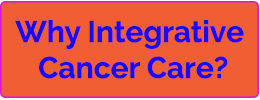 Is there really a link between cancer and the environment? The answer is yes. Environmental carcinogens are prevalent. The National Cancer Institute refers to studies as far back as the 1960s concluding that the majority of cancer patients could have been prevented by acting on what was known about the causes of the disease. Some reports even estimate that the incidence of cancer could be reduced by as much as 80 to 90 percent. The environment is defined as everything outside the body that interacts with humans, including lifestyle factors.
Is there really a link between cancer and the environment? The answer is yes. Environmental carcinogens are prevalent. The National Cancer Institute refers to studies as far back as the 1960s concluding that the majority of cancer patients could have been prevented by acting on what was known about the causes of the disease. Some reports even estimate that the incidence of cancer could be reduced by as much as 80 to 90 percent. The environment is defined as everything outside the body that interacts with humans, including lifestyle factors.
The subject of cancer and the environment is finally receiving more attention as a high-level public health risk due to environmental carcinogens. In 2010, the President’s Cancer Panel published a report Reducing Environmental Cancer Risk: What We Can Do Now, emphasizing failed attention and regulations to environmental contaminants as well as massive neglect for addressing cancer prevention and cancer control through environmental causes of cancer. But, many factors have not been addressed, and many environmental challenges continue to get worse.
“The true burden of environmentally induced cancer has been grossly underestimated. With nearly 80,000 chemicals on the market in the United States, many of which are used by millions of Americans in their daily lives and are un- or understudied and largely unregulated, exposure to potential environmental carcinogens is widespread… Most also are unaware that children are far more vulnerable to environmental toxins and radiation than adults. Efforts to inform the public of such harmful exposures and how to prevent them must be increased. All levels of government, from federal to local, must work to protect every American from needless disease through rigorous regulation of environmental pollutants. Environmental exposures that increase the national cancer burden do not represent a new front in the ongoing war on cancer. However, the grievous harm from this group of carcinogens has not been addressed adequately by the National Cancer Program .”
Environmental carcinogens are also addressed in a larger field called environmental health. Defined by the World Health Organization (WHO), environmental health represents “those aspects of human health, including quality of life, that are determined by physical, chemical, biological, social and psychosocial factors in the environment.” The WHO emphasizes the need to prevent the environmental factors that adversely impact the health of present and future generations.
Attention must be directed to the environmental causes of cancer. This is central to advances in cancer prevention and essential for anyone with a cancer diagnosis. Environmental causes of cancer must be explored, further evaluated, and acted upon through reducing and eliminating exposures individually, locally, regionally, nationally, and globally.
We are not separate from our environment.
We are a part of the environment.
We reflect the environment.
All of the parts create the whole.
Precautionary Principle
How can you make better decisions to reduce cancer risk by improving health and environmental decisions? Read about the precautionary principle.
Clean Non-Toxic Products
Live a clean and green lifestyle supporting health by focusing on the stuff that you put in your body, on your body, and around your body.
Toxins in Personal Care Products
Empower yourself with information about the most harmful chemicals in personal care products and how they are dangerous to our health.





